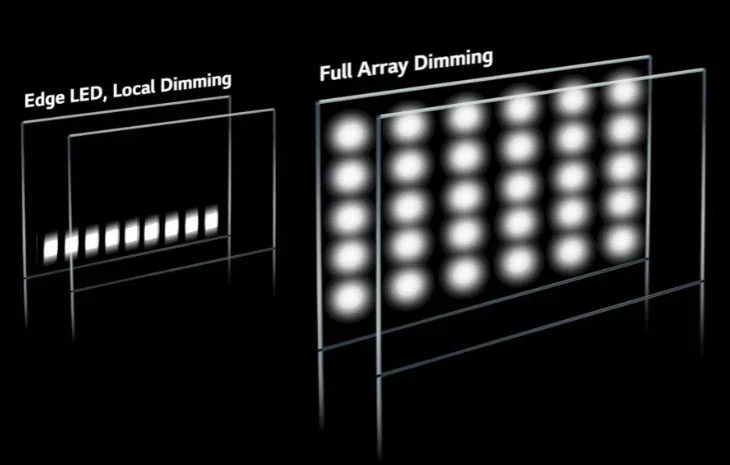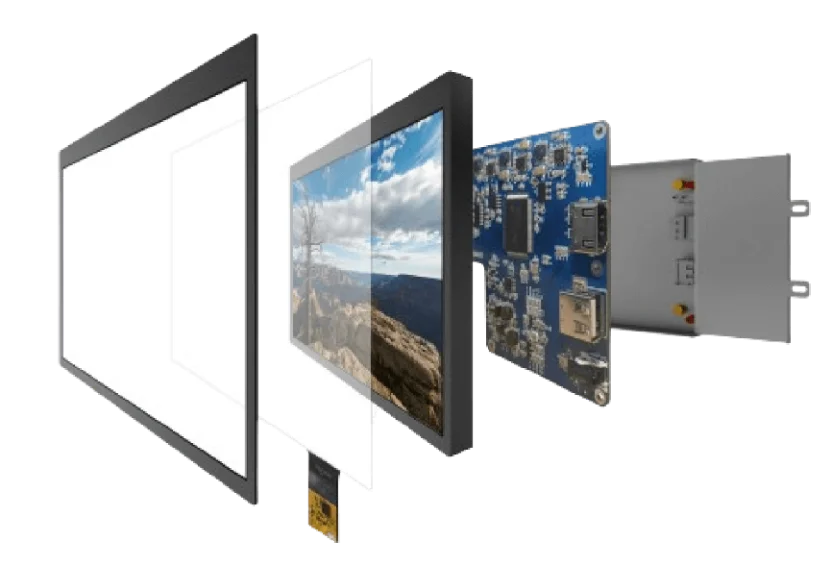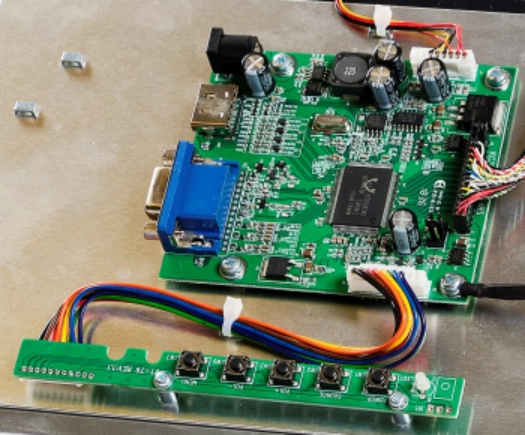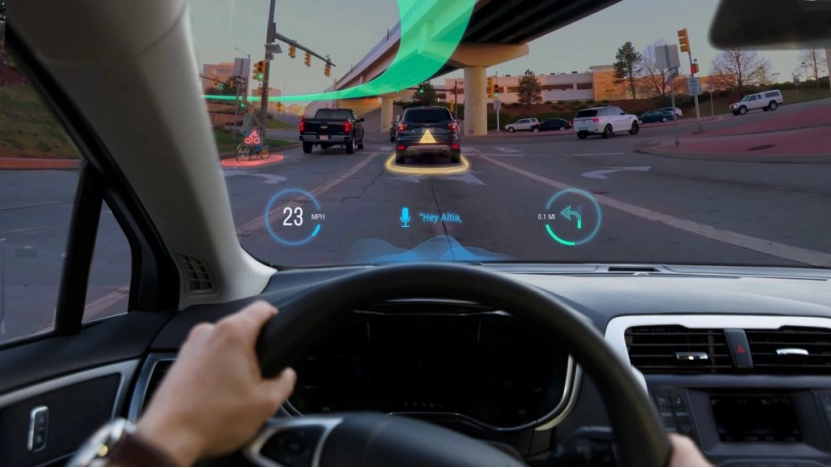Understanding Edge-Lit Technology
How Edge-Lit Backlighting Works
Edge-lit technology is a go-to trick in today’s LED screens. It puts LEDs along the screen’s rim—maybe one side, maybe all four. These LEDs shoot light across the display through a light guide plate. That plate spreads the glow even—lights up the whole screen from the edges.
This setup keeps screens skinny since you don’t need LEDs all over the back. It trims costs too—still dishes out decent brightness and colors for most watching gigs.
Advantages of Edge-Lit Displays
Edge-lit screens pack some sweet perks—makes them a hot pick for makers and buyers:
- Slim Design:LEDs on the edges mean super-thin screens. They look sharp and fit slick in modern spots.
- Cost-Effective:Fewer LEDs than other setups keep it wallet-friendly.
- Energy Efficiency:Less light means less juice—saves power over time.
- Adequate Brightness:Not the brightest out there, but plenty good for inside vibes.
Limitations of Edge-Lit Technology
Edge-lit tech’s got its downsides though:
- Uneven Light Distribution:Light kicks off from the sides—getting it smooth all over’s tricky.
- Lower Contrast Performance:Deep blacks and sharp contrasts? Tougher here than with fancier backlighting.
- Limited HDR Performance:High Dynamic Range (HDR) stuff won’t pop as much—brightness and contrast hit ceilings quick.
Exploring Full-Array Local Dimming
How Full-Array Local Dimming Backlighting Operates
Full-array local dimming (FALD) steps up the backlighting game. LEDs sit in a grid right behind the screen—not just the edges. That grid splits into zones—each one runs its own show.
The big win here’s tweaking brightness by zone—matches what’s on-screen. Dark bits dim down, bright spots stay lit. That pumps up contrast big-time.
It has a full-array LED backlight with local dimming—helps crank up blacks and contrast sharp.
Benefits of Full-Array Local Dimming Displays
FALD screens bring some killer upsides for picture quality:
- Superior Contrast Ratios:Zone control nails deep blacks and bright whites all at once.
- Improved HDR Performance:Zone tweaks make HDR stuff pop—real and vivid.
- Uniform Brightness:LEDs spread out back there keep light steady all over.
- Excellent Peak Brightness:Shines strong—even in rooms with lots of light.
Challenges of Full-Array Local Dimming Technology
FALD’s top-notch, but it’s got hitches:
- Higher Cost:Tons of LEDs and fancy controls jack up the price tag.
- Thicker Displays:Needs more room for lights and wires—not as slim as edge-lit.
- Backlighting Could Be Brighter:Might want more punch for straight-up sun glare.
Key Differences Between Edge-Lit and Full-Array Local Dimming
Brightness and Contrast Performance Comparison
On brightness, full-array local dimming usually tops edge-lit tech. Its zone control lands high peaks—makes stuff look lively even in bright spots.
Contrast leans hard to FALD too. It can kill lights in zones for true black—edge-lit can’t pull that off slick.
Uniformity in Light Distribution Across the Screen
Even light’s another win for FALD. LEDs all over the back keep it steady—no hot spots or shadows like edge-lit might get.
Edge-lit screens lean on that guide plate to push light in from the sides. That can leave some parts uneven.
Energy Efficiency and Power Consumption Differences
Edge-lit screens sip less juice—fewer LEDs overall than FALD’s packed grids.
But FALD’s catching up some. Smarter LED tricks trim power use without skimping on its big performance edge.
Choosing Between Edge-Lit and Full-Array Local Dimming for Different Needs
Suitability for Home Entertainment Systems
Picking a screen for home fun hinges on what you like watching, room light, and cash stash. Edge-lit displays hook casual folks who dig looks and low cost. Their skinny build slides right into modern digs—great for wall hangs or tight nooks. Plus, they’re light on power for long binge runs.
For movie buffs or gamers chasing primo visuals, full-array local dimming’s the ticket. It has a full-array LED backlight with local dimming—boosts blacks and contrast sharp. That shines in dark rooms with deep blacks and punchy colors. FALD handles HDR better too—tweaks zones live for jaw-dropping movie and game vibes.
Considerations for Professional and Industrial Applications
In pro gigs like design studios or edit bays, true colors and steady light matter heaps. Full-array local dimming nails it here—keeps glow even across the screen. No patchy light distractions—lets pros zero in on fine bits.
Industrial setups need gutsy performance in all kinds of spots. Edge-lit works where thin builds and savings rule. But if you’re fighting bright glare, FALD’s peak brightness steps up big—keeps things clear in sun or harsh bulbs.
Budget and Consumer Preferences
Cash limits shape what tech you grab. Edge-lit models stay cheap—simple setup, fewer LEDs. They fit folks wanting solid screens without breaking the bank.
Full-array local dimming costs more—fancy features and top visuals jack it up. For picky buyers ready to splash out, FALD’s unmatched picture payoff makes it worth it.
The Role of Display Manufacturers in Advancing Technology
Innovations in Edge-Lit Backlighting by Industry Leaders
Screen makers keep tweaking edge-lit tech to dodge its weak spots. New light guide plates spread glow better—cuts uneven brightness while keeping that slim vibe.
They’re juicing up power savings too—smarter LED controls trim juice use. That’s green and keeps costs down in the game.
Improvements in Full-Array Local Dimming Solutions Over Time
Full-array local dimming’s grown heaps—shows makers pushing for killer visuals. Old setups had fewer zones, less control wiggle. Now, they pack way more zones—fine-tunes contrast and HDR slick.
LED tweaks hit high brightness without guzzling power—keeps FALD in the race for punch and green cred.
Team-ups with content folks spark fixes for new stuff like 8K and next-level HDR too. That keeps FALD ready for tomorrow’s shows.
FAQs
What is the main difference between edge-lit and full-array local dimming?
Edge-lit sticks LEDs on screen edges. Full-array local dimming spreads ‘em in a grid out back—zones tweak on their own for better contrast.
Which technology offers better HDR performance?
Full-array local dimming wins here—zone shifts make HDR pop bright and real.
Are edge-lit displays more energy-efficient than full-array local dimming?
Yep—edge-lit sips less power with fewer LEDs than full-array’s big grids.
Why do full-array local dimming screens cost more?
Fancy builds with tons of LEDs and zone controls bump up quality—and price.
For custom screen fixes or scoop on edge-lit or full-array local dimming gear, hit up Kadi Display—a pro outfit with 20+ years in industrial and medical screens, rocking ISO-certified digs over 10,000㎡!
Latest Blog & News
- Capacitive vs. Resistive Touch Screens: A Complete Guide to Differences, Advantages, and Applications
- How Does a Reflective LCD Display Work? A Comprehensive Guide
- What Causes Lines in LCD Display Modules? (And How to Fix Them)
- What is the difference between Edge-Lit and Full-Array Local Dimming?
- Why Is AOI So Important for FOG Bonding?













